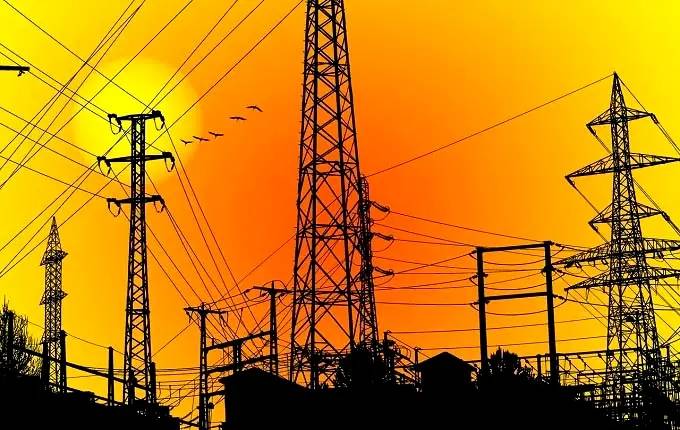THERE were indications, last week that the delivery of 10,000 megawatts, MW, under the revised energy sector plan is set to fail again
The important project, which sets out the medium-term structural reforms to diversify Nigeria’s economy, with a top priority of expanding power sector infrastructure, initially scheduled for execution between 2017 and 2021, under the Federal Government’s Economic Recovery and Growth Plan, ERGP, was extended to December 2022.
But industry experts have indicated that the target might not be realised because of fundamental challenges, including limited investment, lack of adequate infrastructure, poor maintenance, inadequate gas, low water for hydro power stations and increased pipeline vandalism still staring the sector in the face.
Specifically, they contended that the sector currently suffers from inadequate investment, especially as many planned projects have not taken off, thus denying the nation the prospect of generating additional power.
The experts noted that besides poor maintenance of existing infrastructure, inadequate gas supply to thermal stations, low water level at hydro plants and vandalism have also hindered power generation.
In a telephone interview with Vanguard, yesterday, the National President, Oil and Gas Service Providers Association of Nigeria, OGSPAN, Maxi Colman Obasi, said: “The power sector calls for the investment of huge funds. It also demands long term to design, construct and deliver power plants and other assets. From all indications, the remaining time seems to be too short. It is very doubtful if the target would be realised.”
Similarly, in another interview with Vanguard, the President, Nigeria Consumer Protection Network, Kunle Kola Olubiyo, said that power sector calls for long term planning, investment, development and maintenance of assets, capable of generating, transmitting and distributing adequate power to consumers nationwide.
Nigeria needs to embark on massive power generation because the present level is grossly inadequate. According to the United Nations, 1,000MW should be dedicated to one million persons, meaning that for the over 200 million people, we need to generate about 200,000MW.”
Comparing Nigeria, other African nations
Olubiyo, who noted that comparatively, some African countries are already ahead of Nigeria in power generation, stated: “South Africa with a population of about 62 million generates over 50,000MW (50 GW). Egypt with a population of about 107 million people generates over 50,000 MW (50GW).
“Invariably, Nigeria’s quest for inclusive growth and sustainable development and reduction of Energy poverty indices, Food security, Power mechanised farming/Commercial agriculture, and Energy security would be a mirage without a stable, reliable and safe delivery of abudant power supply.”
GenCos blame DisCos, others
In its report – Spinning Reserves to do or not to do – obtained by Vanguard, the electricity generation companies, GenCos, stated: “The inability of the system operator to maintain grid stability to acceptable technical limits has exposed generator units to perform beyond factory rated capability. Frequency deviations out of technical tolerable limits are not only damaging to the units but also are increasing both the machines fixed maintenance cost and variable maintenance costs.”
The GenCos, which also accused Steel Mills for drawing too much load from the system, stated: “Steel Mills form a large chunk of funds both for the DisCos and the TCN, but detrimental to the generation machines. It is trite that Steel Mills create harmonics and causes voltage fluctuations at a very high level. These harmonics creates lots of stress on the rotors of the turbines. They create inverse torques on the blades of the rotors producing cracks and distortions.
“The GenCos have been due to this menace saddled with continuously adjusting their automatic voltage regulator, AVR. There is too much amount of volatile loads mostly brought by Steel Mills. Research shows that close to 50 Steel Mills are connected to the Nigeria electric grid. The loads for the Steel Mills vary from 3 to 35 MW depending on the Steel Mills, going from minimum to maximum to minimum in a continuous cycles varying within 6 to 10 minutes.
“Due to the Steel Mills, the aggregate Steel Mills loads can easily represent several hundreds of MW varying 6 to 10 times an hour from close to 0 MW up to 500 MW and down again close to 0 MW. In addition to the load volatility, there are huge problems created by the Steel Mills.”
“The GenCos do not believe that the DisCos are significantly improving the quality of their distribution feeders this will be further buttressed during the upcoming raining season as a high quantity of feeders’ trip during the next raining season.”
Why spinning reserve, others key
Furthermore, the GenCos, which provides more insight, stated: “In addition to procuring spinning reserve, there is need for adequate monitoring and sanctioning of all participants who go outside the grid code specification.
“Outages/grid collapses occur when there are system disturbances along the transmission line and the ready solution, which is calling up of ‘spinning reserve’ is not readily available and this is because there few or no incentivized providers of this service. International best practice recommends that 10% of the total generating capacity should be allowed for spinning reserve. Thus, the Nigerian grid requires up to 600MW


